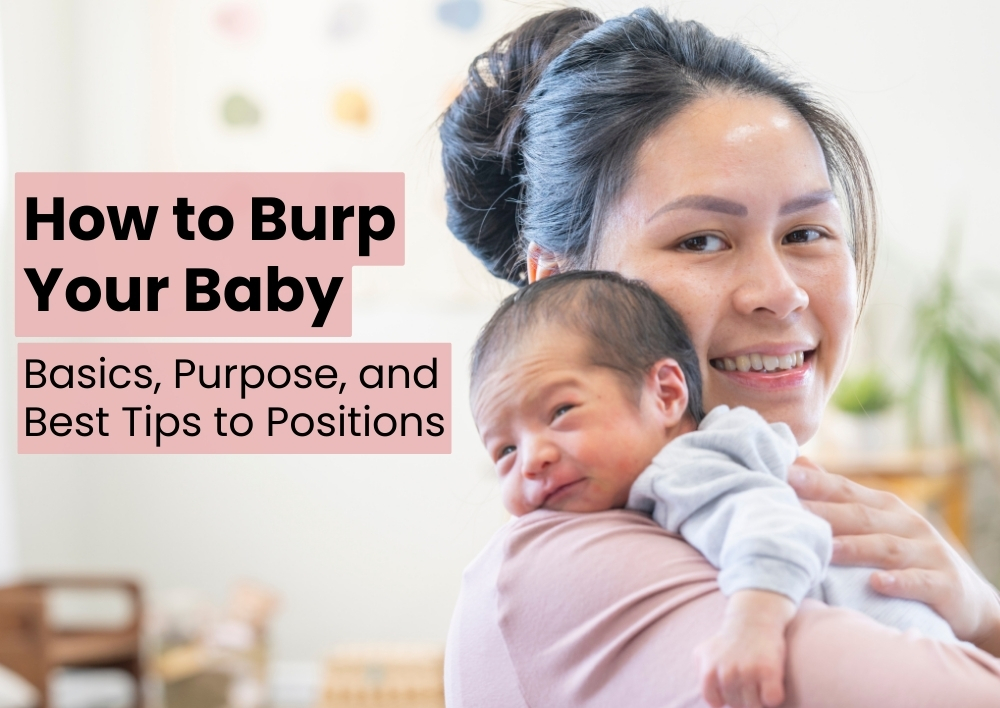How to Burp Your Baby: Basics, Purpose, and Best Tips to Positions
Welcoming a baby into the world brings endless joy, but it also comes with so many questions. One of the common concerns new parents face is ensuring their baby is comfortable after feeding. Burping might seem like a simple task, but it plays an important role in your baby's digestion.
According to the best pediatrician in Gurgaon at Miracles Apollo Cradle, Burping is an essential part of newborn care, important for their comfort and proper feeding. When babies feed, whether through breastfeeding or bottle-feeding, they often swallow air along with the milk. This swallowed air can cause discomfort, making the baby feel full before they've had enough to eat. Understanding the importance of burping and the best method for burping a newborn can help parents ensure their baby stays happy and well-fed. In this blog, we discuss the basics, purpose, and best tips for burping your baby effectively.
What is Burping?
During feeding, babies tend to swallow air, especially when bottle-feeding due to the faster milk flow from the bottle’s nipple. This air gets trapped in their tiny stomachs, forming gas bubbles that lead to pressure and discomfort. If not released, these bubbles can cause fussiness, spitting up, and even symptoms similar to colic.
Burping is the act of helping a baby release the air it swallows during feeding. This process relieves discomfort caused by gas bubbles in their stomach. Burping typically involves gently patting or rubbing the baby's back while holding them upright.
Basics of Burping
-
Timing: Burp your baby during and after feeding. If breastfeeding, try burping when switching breasts. For bottle-fed babies, burping halfway through and at the end of the feed works well.
-
Be Gentle: Babies have tender stomachs, so gentle pats are key.
-
Be Patient: Sometimes it takes a few minutes for the burp to come out. Don’t rush; patience is necessary.
Best Burping Techniques For Your Baby
To burp a baby, you gently pat or rub their back while holding them in an upright position. Common burping positions include holding the baby over your shoulder, sitting them on your lap, or laying them face down across your lap. Finding the most effective position might take some experimentation, as every baby is different. Here are newborn burping techniques:
-
Over-the-Shoulder: This traditional method involves holding your baby with their chin resting on your shoulder. Support the bottom of the baby with one hand and gently pat or rub the back with the other. Ensure the head of the baby is well-supported.
-
Sitting on Your Lap: Sit your baby on your lap but facing away from you. Support their chest and head with one hand, keeping your baby’s chin resting on your hand, not their throat. Use your other hand to pat or rub their back gently.
-
Face-Down on Your Lap: Lay your baby across your lap, tummy down. Support the head, making sure it’s higher than the chest. Gently pat or rub their back. This position can also help relieve gas.
It's worth noting that not all babies need frequent burping. Some naturally expel the air on their own, while others might need a bit more help. Watch for signs that your baby needs to be burped, such as squirming, pulling away during feeding, or showing signs of discomfort.
By paying attention to your baby's signals and mastering the right burping techniques, you can help your little one feel more comfortable and ensure they get the nourishment they need without unnecessary discomfort.
Tips for Successful Burping
Burping your baby helps them feel better after feeding. Here are some simple tips to make burping easier and more effective:
-
Burp Even if Baby Isn’t Fussy: Even if your baby seems happy, it's good to burp them. This can help prevent discomfort later.
-
Try Different Positions: Sometimes one position works better than another. You can try holding your baby over your shoulder, sitting them on your lap, or laying them face-down across your lap.
-
Be Gentle: Babies have small, delicate tummies. Use soft pats or rubs on their back.
-
Be Patient: It might take a few minutes for the burp to come out. Take your time and don’t rush.
-
Add a Little Movement: Gentle rocking or bouncing can help get the burp out.
-
Burp During and After Feeding: If you’re breastfeeding, burp your baby when you switch breasts. If you’re bottle-feeding, try burping halfway through and at the end of the feed.
-
Look for Signs: Sometimes babies show signs they need to burp, like pulling away from the breast or bottle or getting fussy. Pay attention to these signs.
With these simple tips, you can help your baby burp easily and feel more comfortable after feeding.
What To Do If A Baby Doesn’t Burp?
If your baby doesn’t burp after a few minutes of trying, don't worry too much. Here are different steps you can take:
-
Change Positions: Try different burping positions, such as holding your baby over your shoulder, sitting them on your lap, or laying them face down across your lap.
-
Be Gentle: Pat or rub your baby's back gently in an upward motion to help release the trapped air.
-
Wait and Try Again: If your baby doesn't burp after a few minutes, continue feeding and try burping them again later.
-
Observe for Discomfort: Keep an eye on your baby for signs of discomfort, such as fussiness or pulling away during feeding. If they seem content and are feeding well, they might not need to burp.
If your baby seems excessively fussy, spits up frequently, or has trouble feeding, it’s wise to consult a pediatrician near you. These could be signs of reflux or other digestive issues that might need medical attention.
Conclusion:
Burping your baby is a small yet significant part of their feeding routine. By mastering the basics and finding the best positions, you can ensure your baby’s comfort and happiness. Remember, every baby is unique, so what works for one might not work for another. With a bit of patience and practice, you’ll find the perfect technique that works for your little one. Happy burping!






.webp)







Was the information useful?
0 0